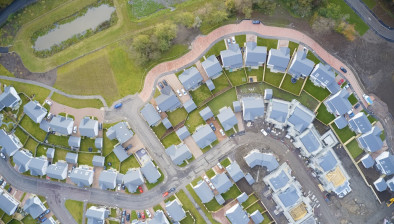Canal regeneration partnership agreement paves way for 2,500 Glasgow homes
 Glasgow City Council has given approval to entering into a partnership agreement with Scottish Canals and Scottish Water to deliver the North Glasgow Integrated Water Management System (NGIWMS).
Glasgow City Council has given approval to entering into a partnership agreement with Scottish Canals and Scottish Water to deliver the North Glasgow Integrated Water Management System (NGIWMS).
This is an innovative system that will use the Forth and Clyde Canal and new technology to tackle the capacity - and therefore potential flooding - issues that on occasion face the sewer network in the north of the city.
In addition, the work of the NGIWMS will allow for land release for the development of 2,500 homes in the area at sites such as Cowlairs, Hamiltonhill, 100 Acre Hill, Sighthill and Ruchill Hospital.
The historic development of North Glasgow saw the area’s natural watercourses being incorporated into its combined sewer network, and as a result, the network has now reached capacity.
The £4.7million NGIWMS - part-funded by the Glasgow City Region City Deal - will use the Summit Pound (the canal’s highest section between Locks 20 and 21) and its Glasgow Branch as a conduit to transport surface water from North Glasgow to the River Kelvin.
The system will also use the canal to store over 55,000 cubic metres of flood storage during storms, achieving this by automatically reducing water levels - through Glasgow’s SMART City platform - in the canal 24 hours ahead of a forecasted storm / flood event. Such action reduces the area required to be set aside on development sites for flood storage and so increases the number of potential new homes on those sites.
Councillor Kenny McLean, city convener for neighbourhoods, housing and public realm at Glasgow City Council, said: “Today’s decision is fantastic news, and the new system will both unlock the development potential of this historic part of Glasgow and protect local homes, business and the environment from flooding using smart technology. We look forward to working with our partners - Scottish Canals and Scottish Water - to deliver this project which will transform the north of the city, bringing great social, economic and environmental benefits.”








